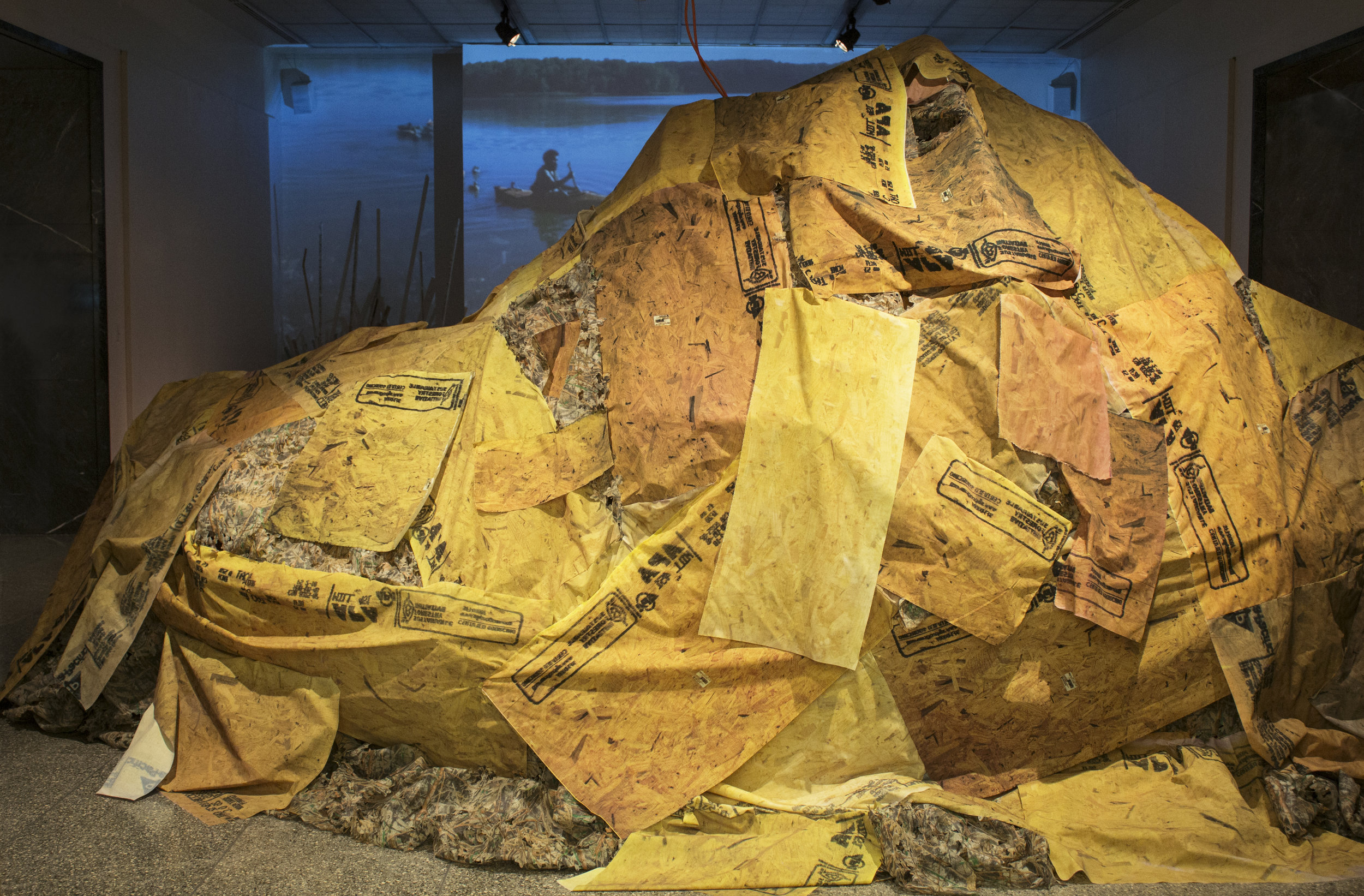
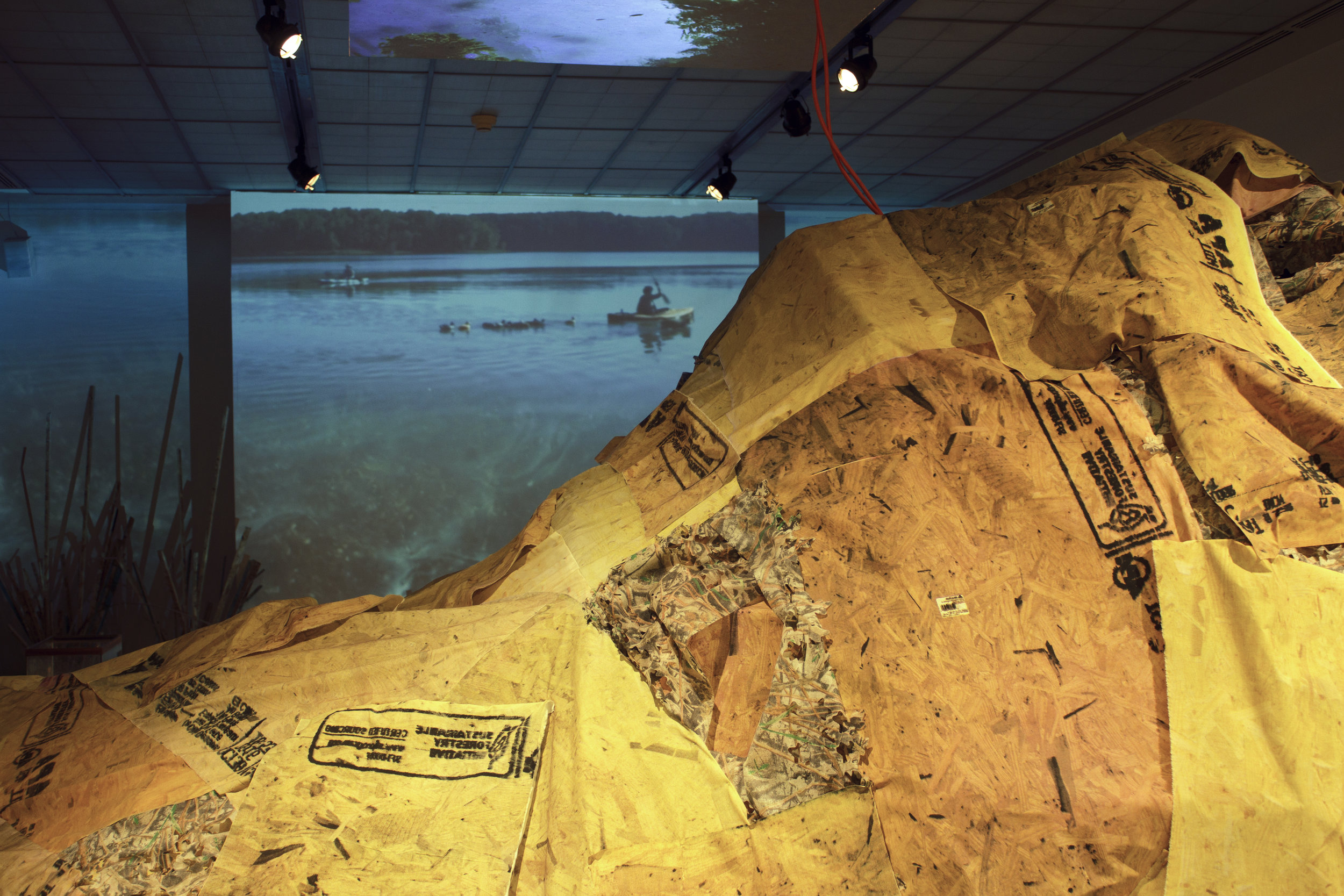
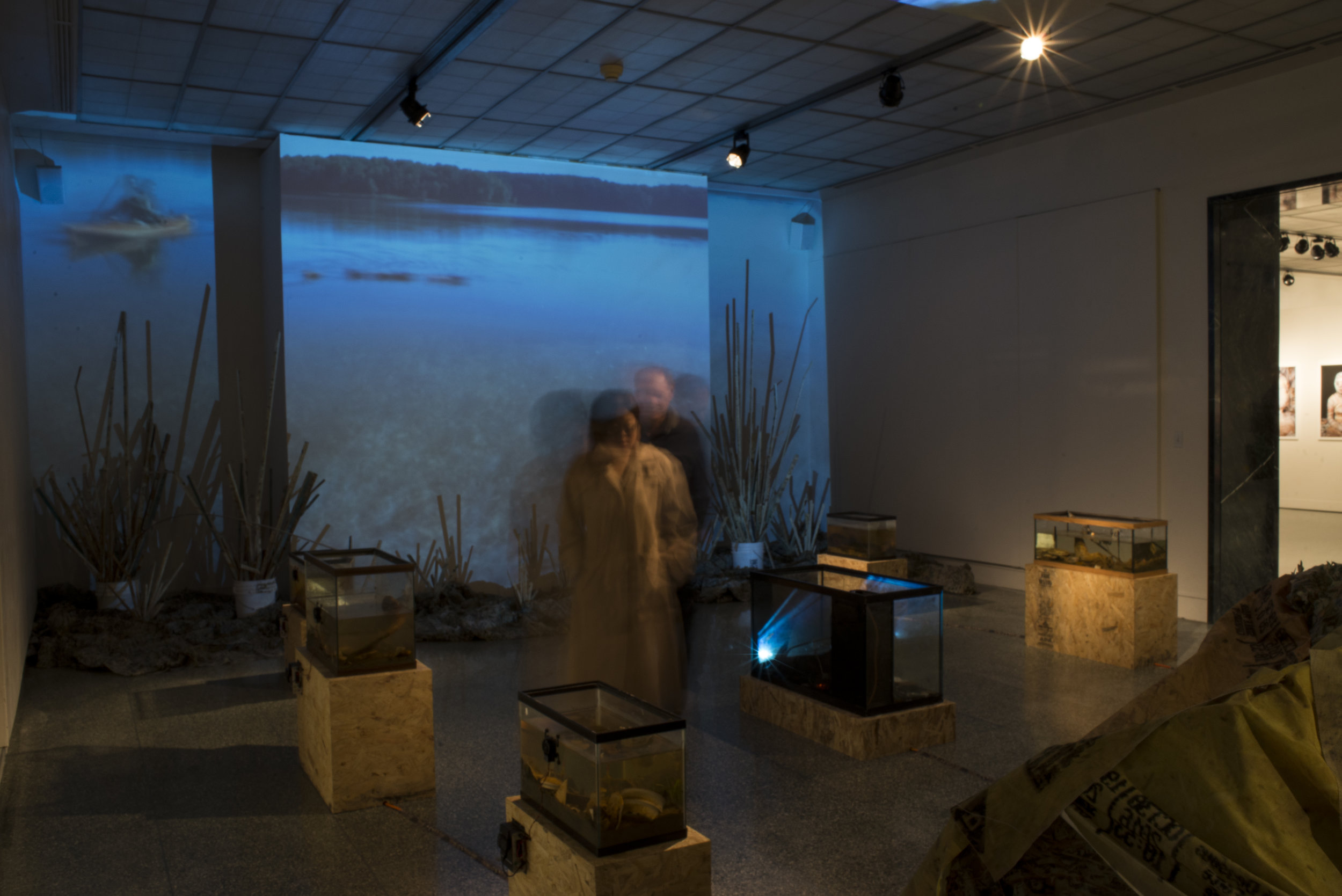
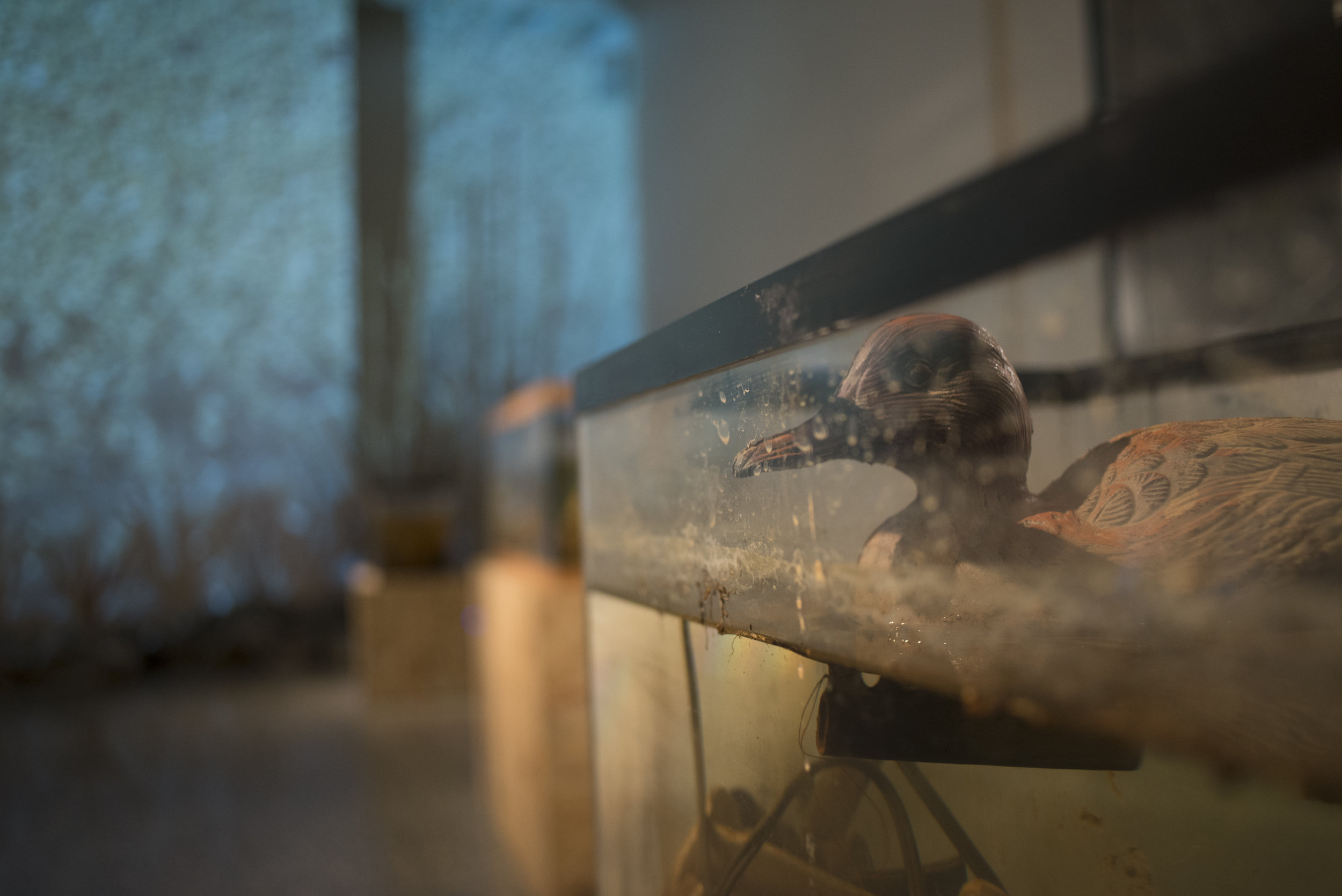
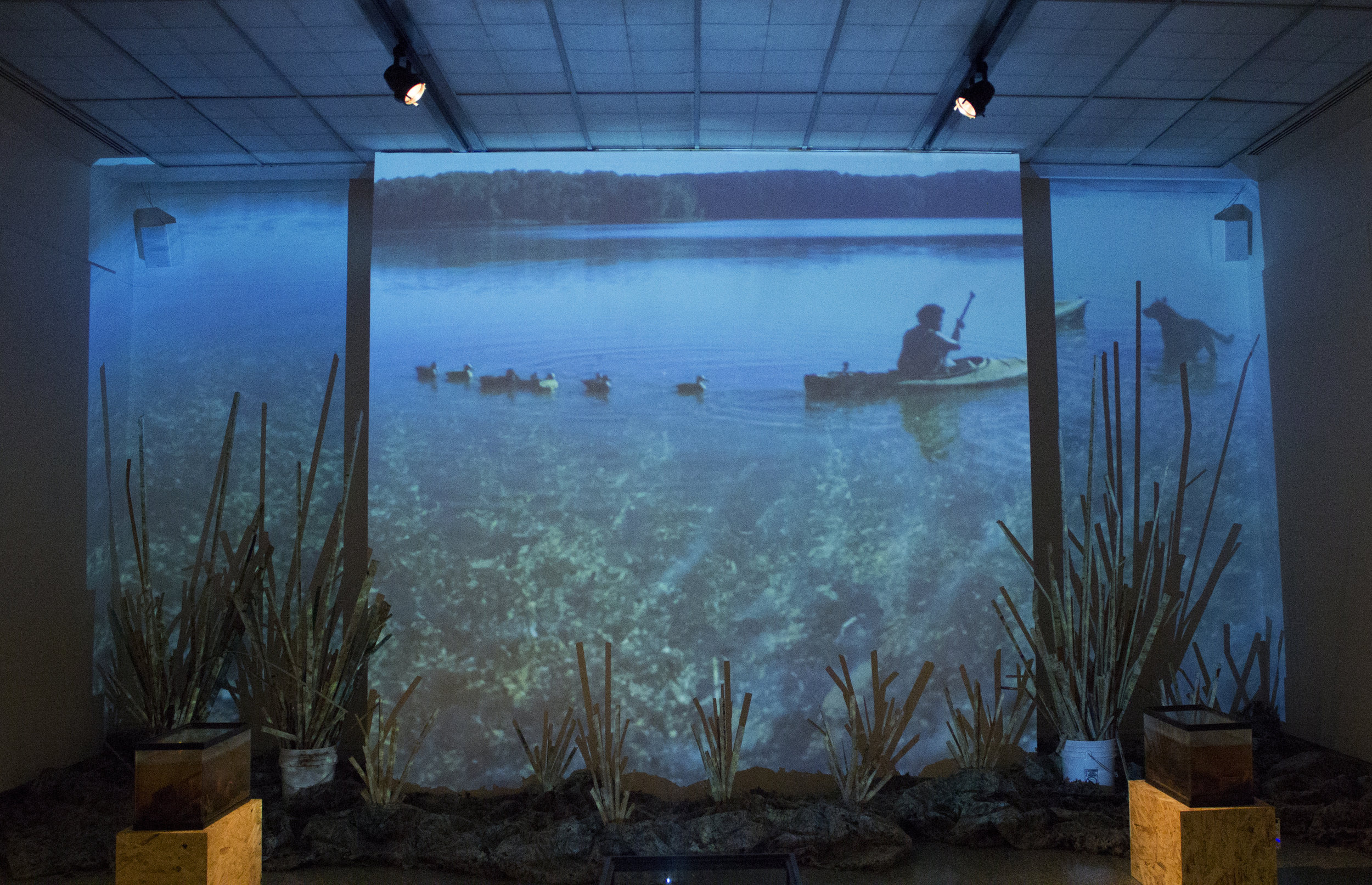
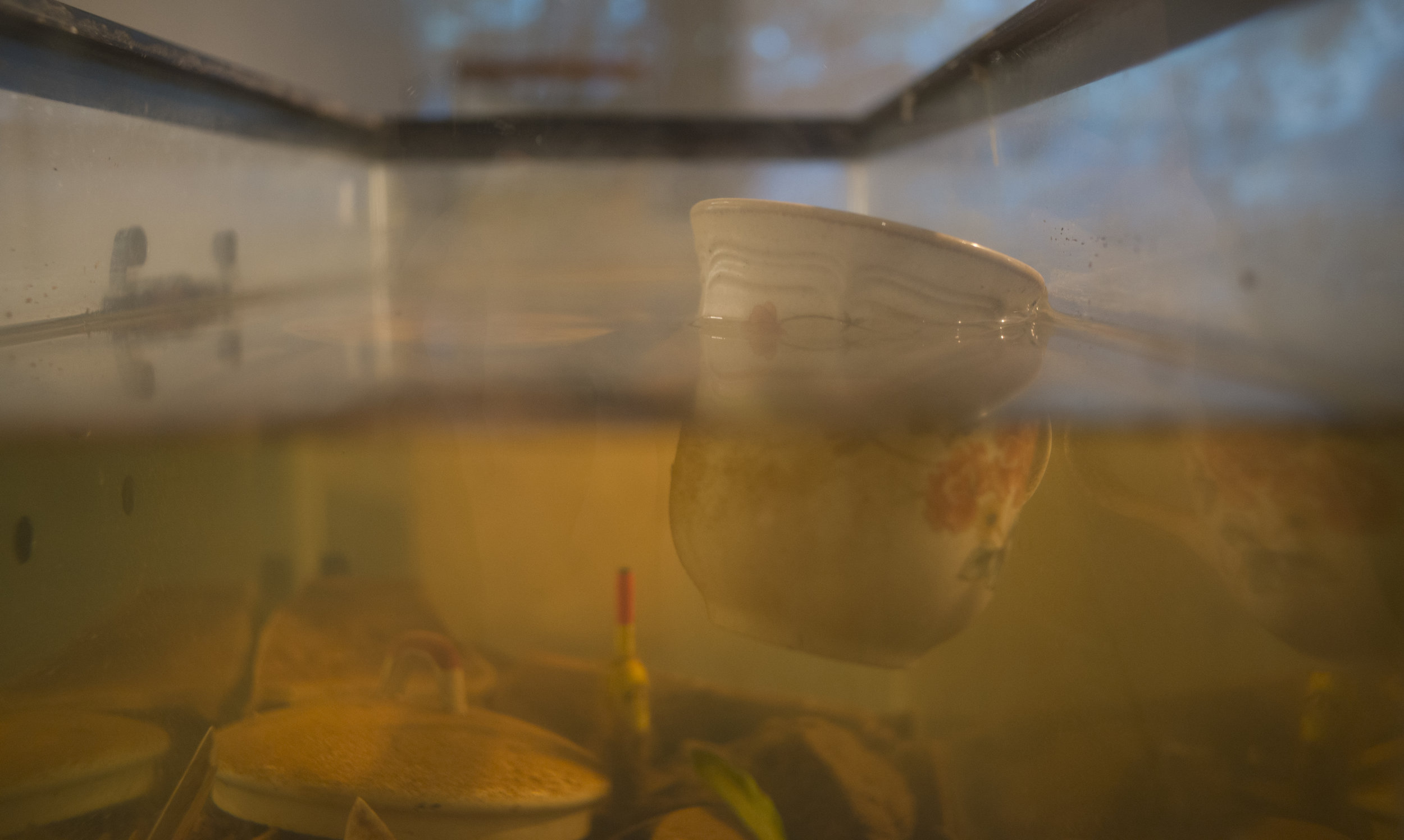
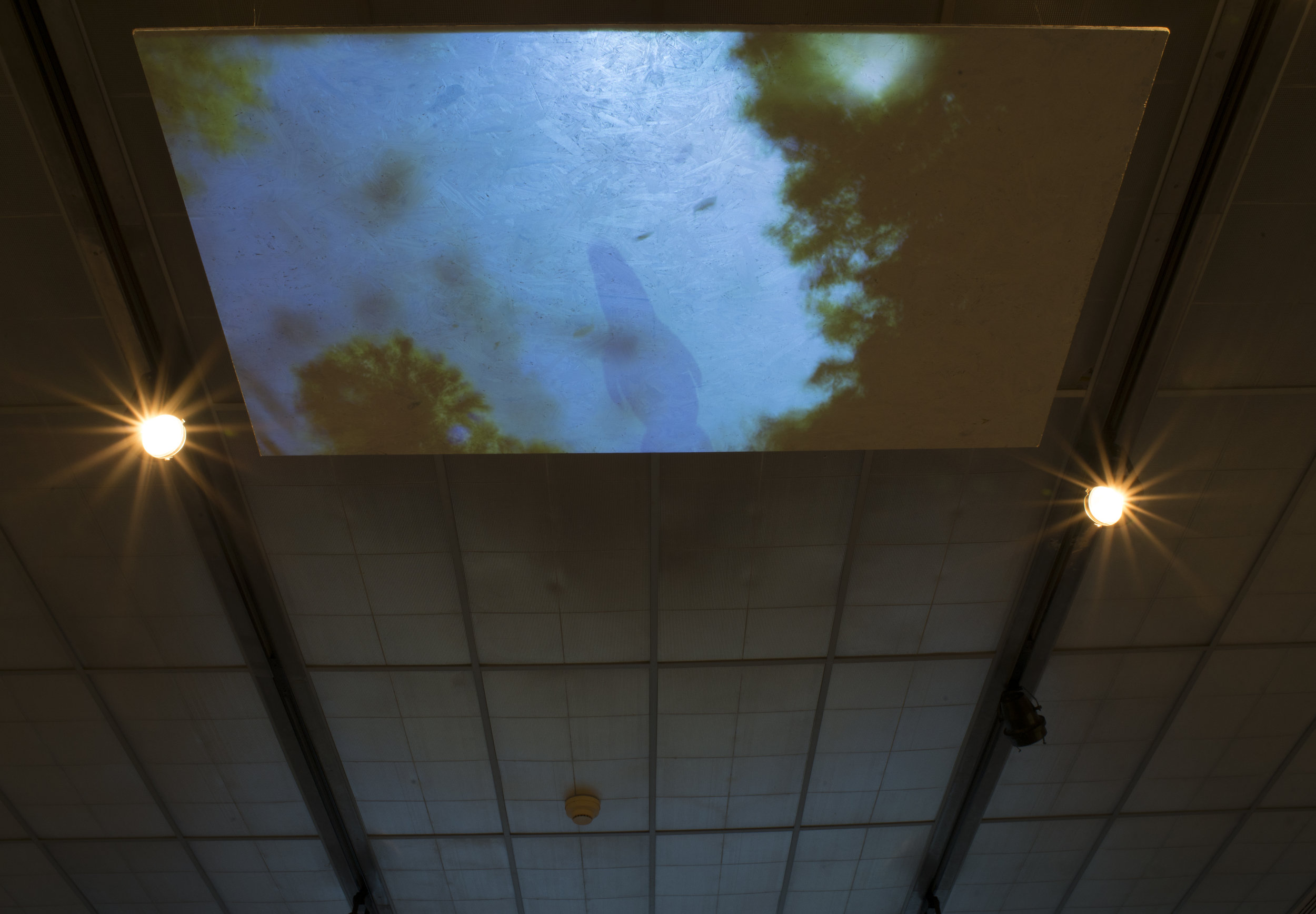
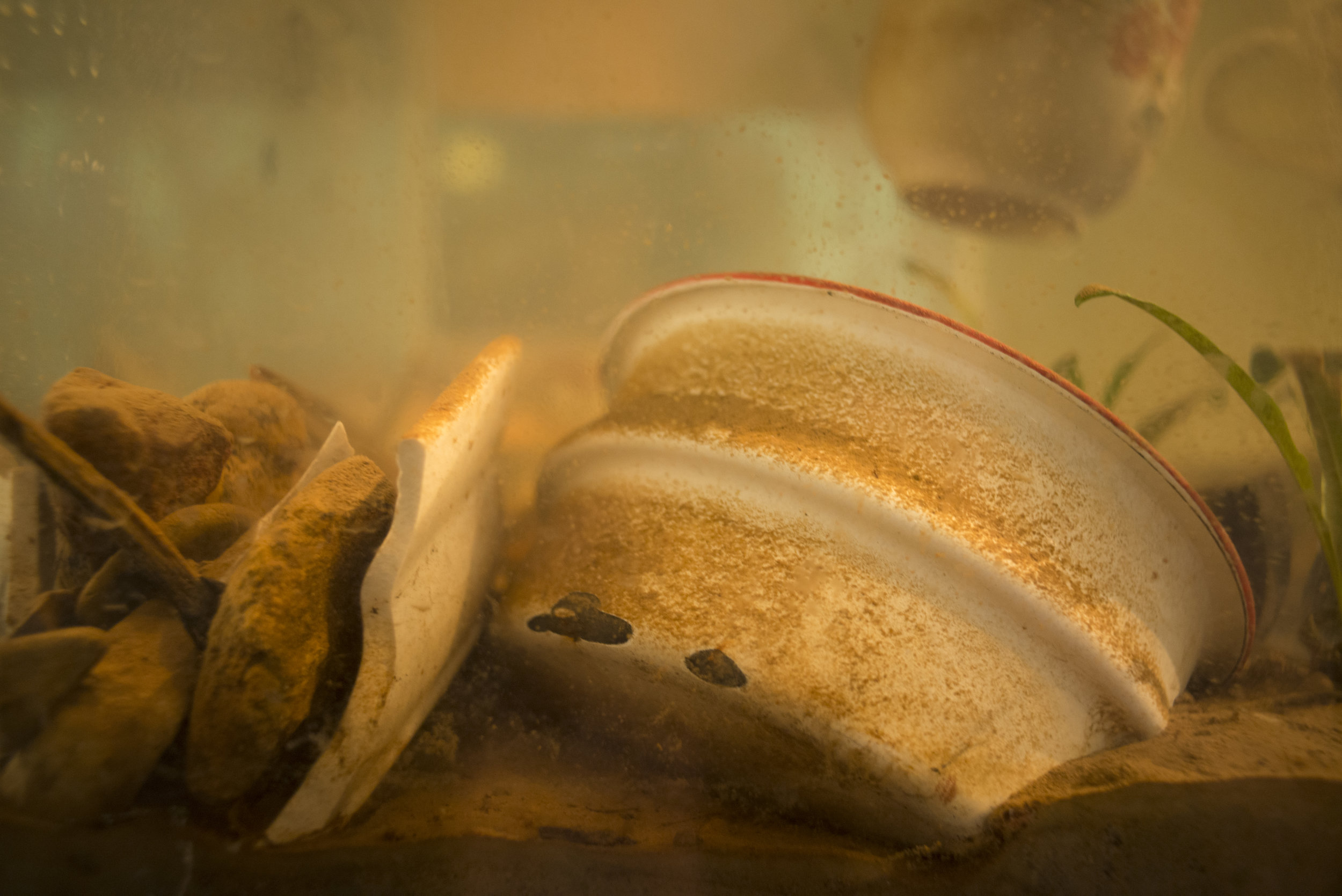
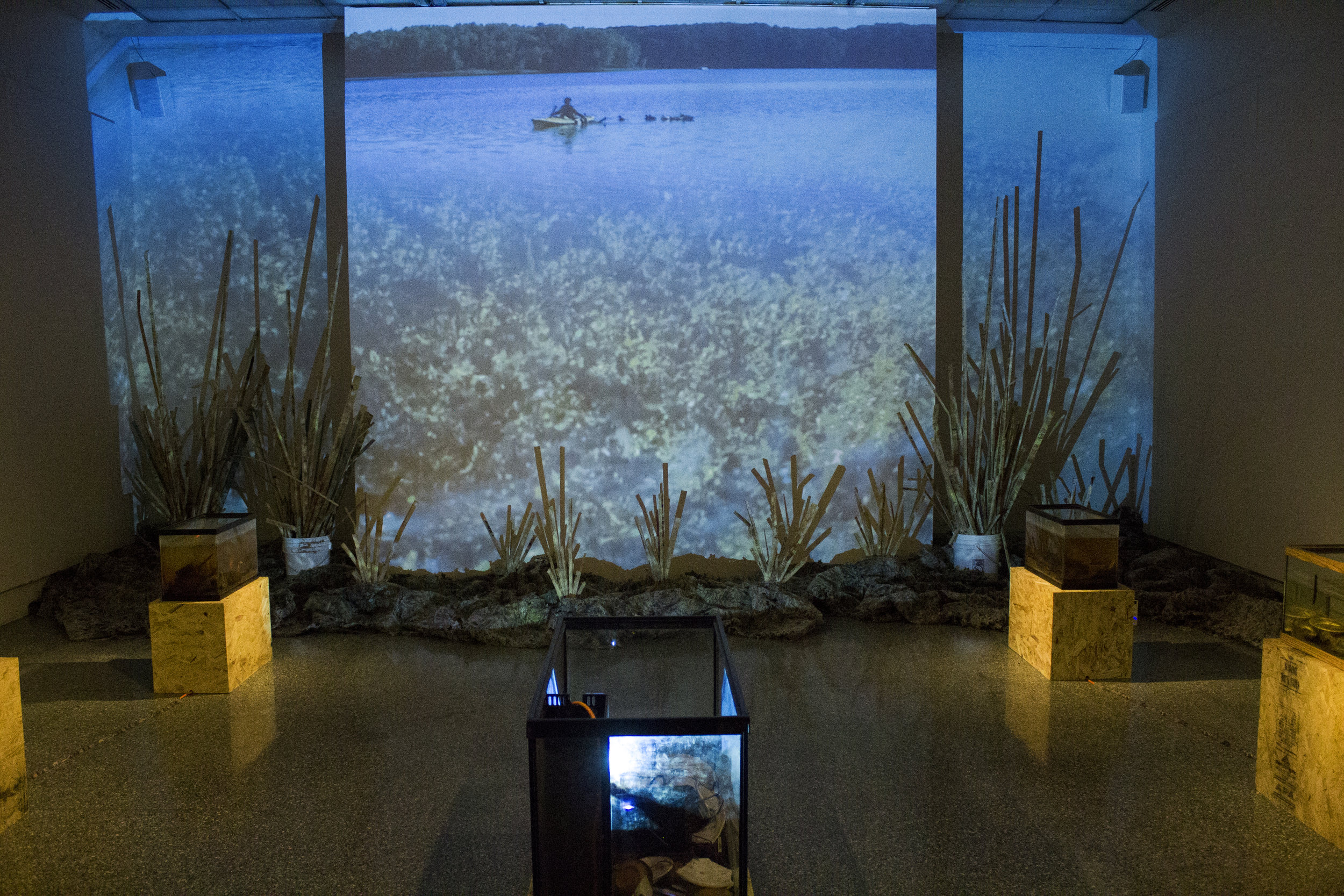
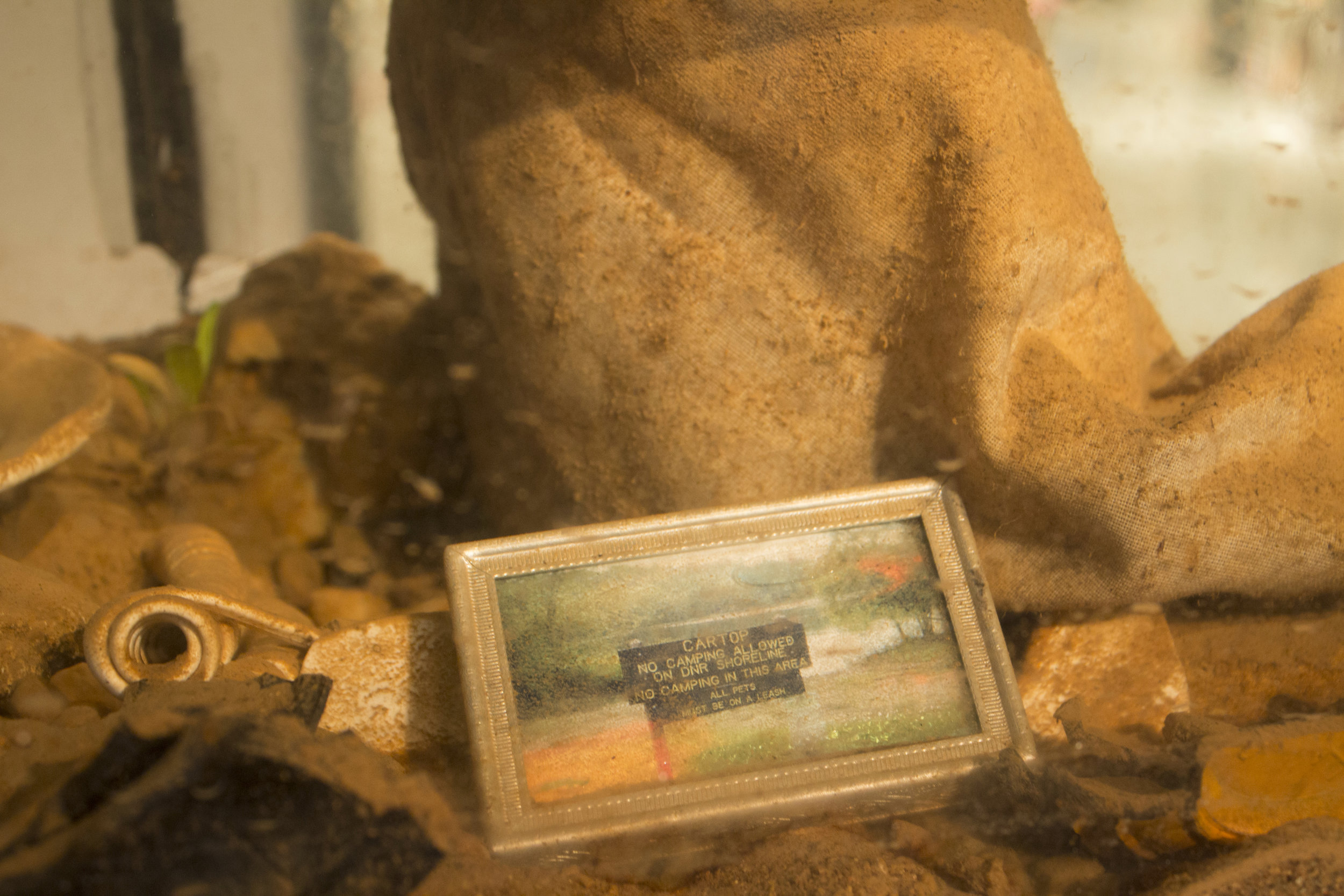
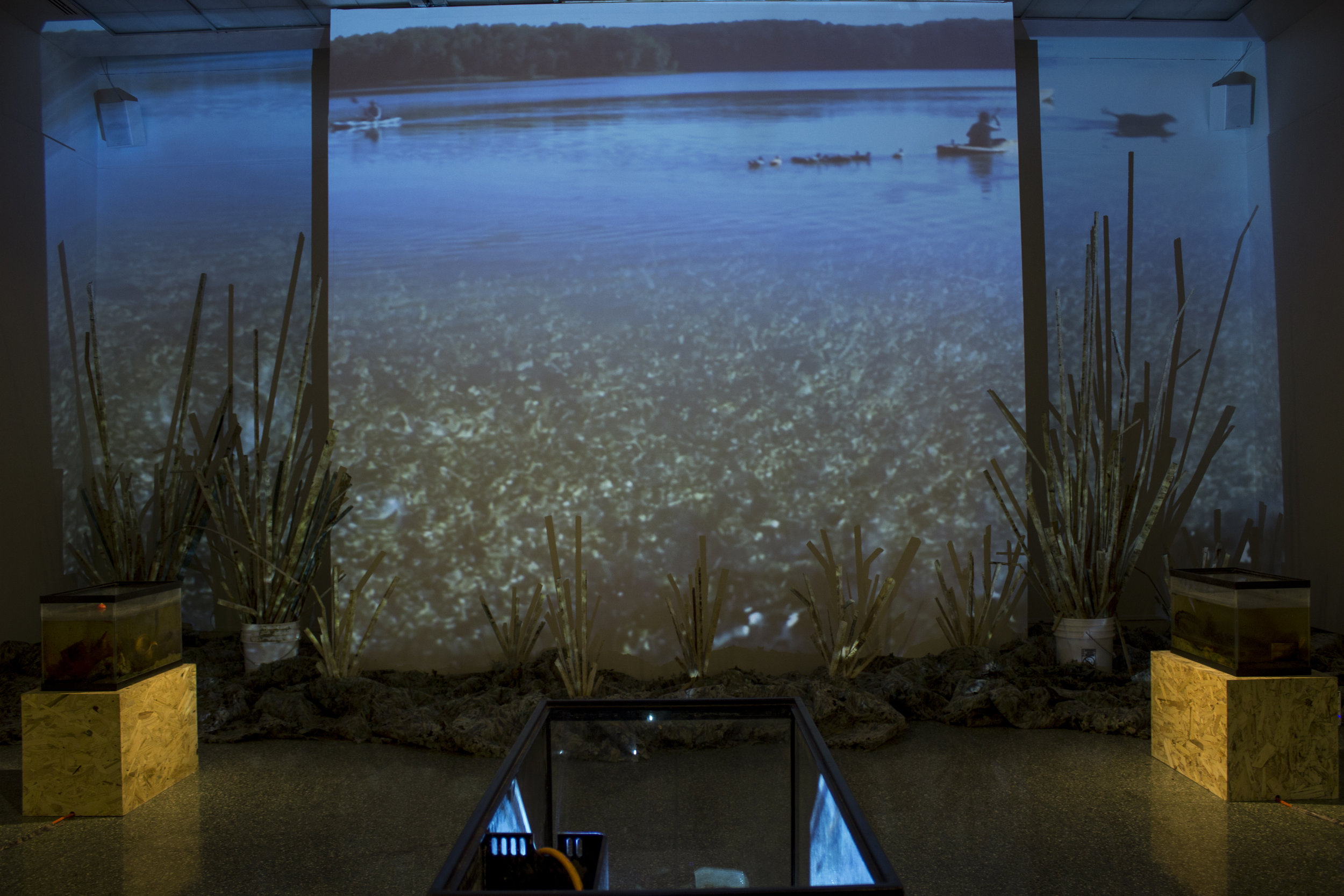

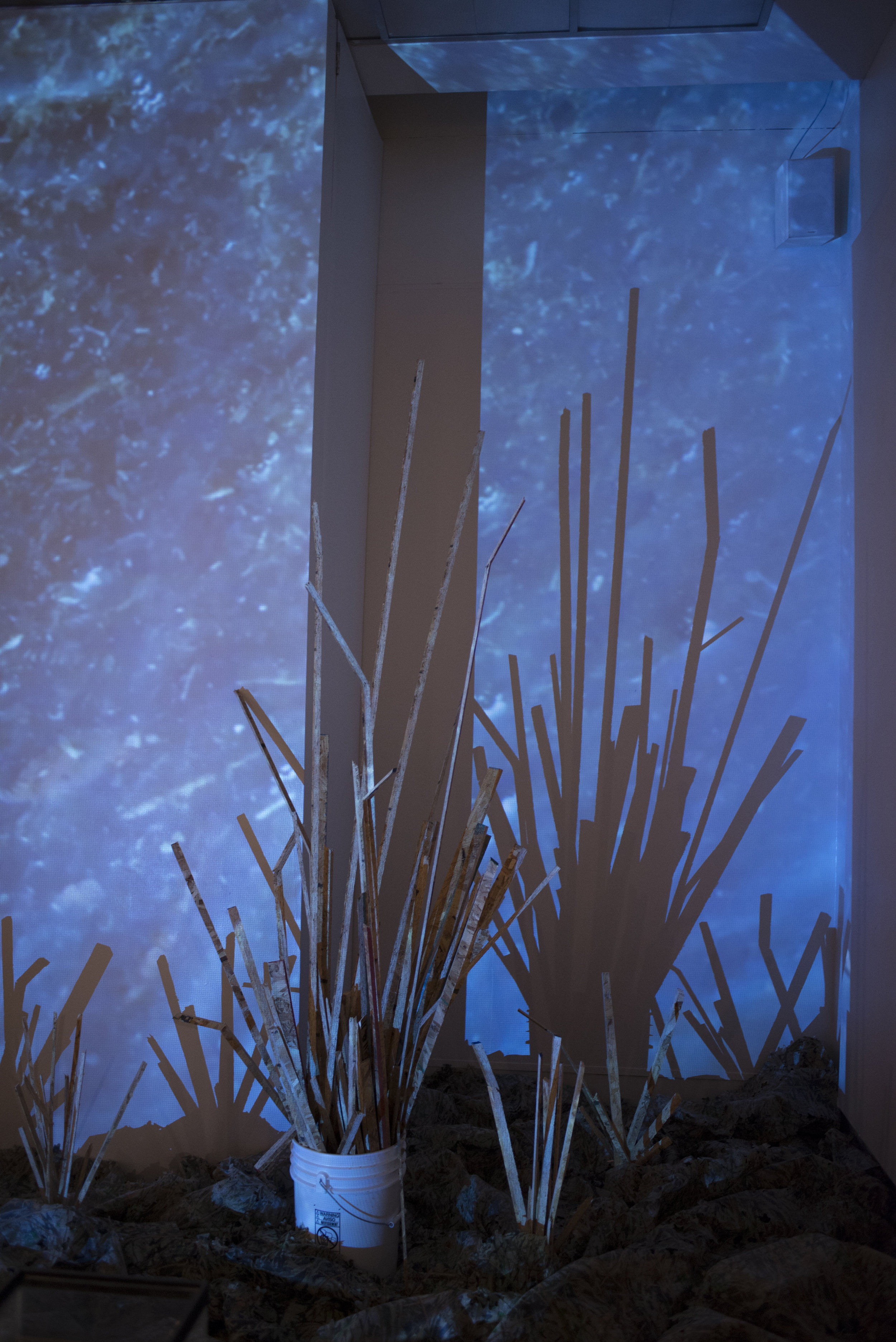
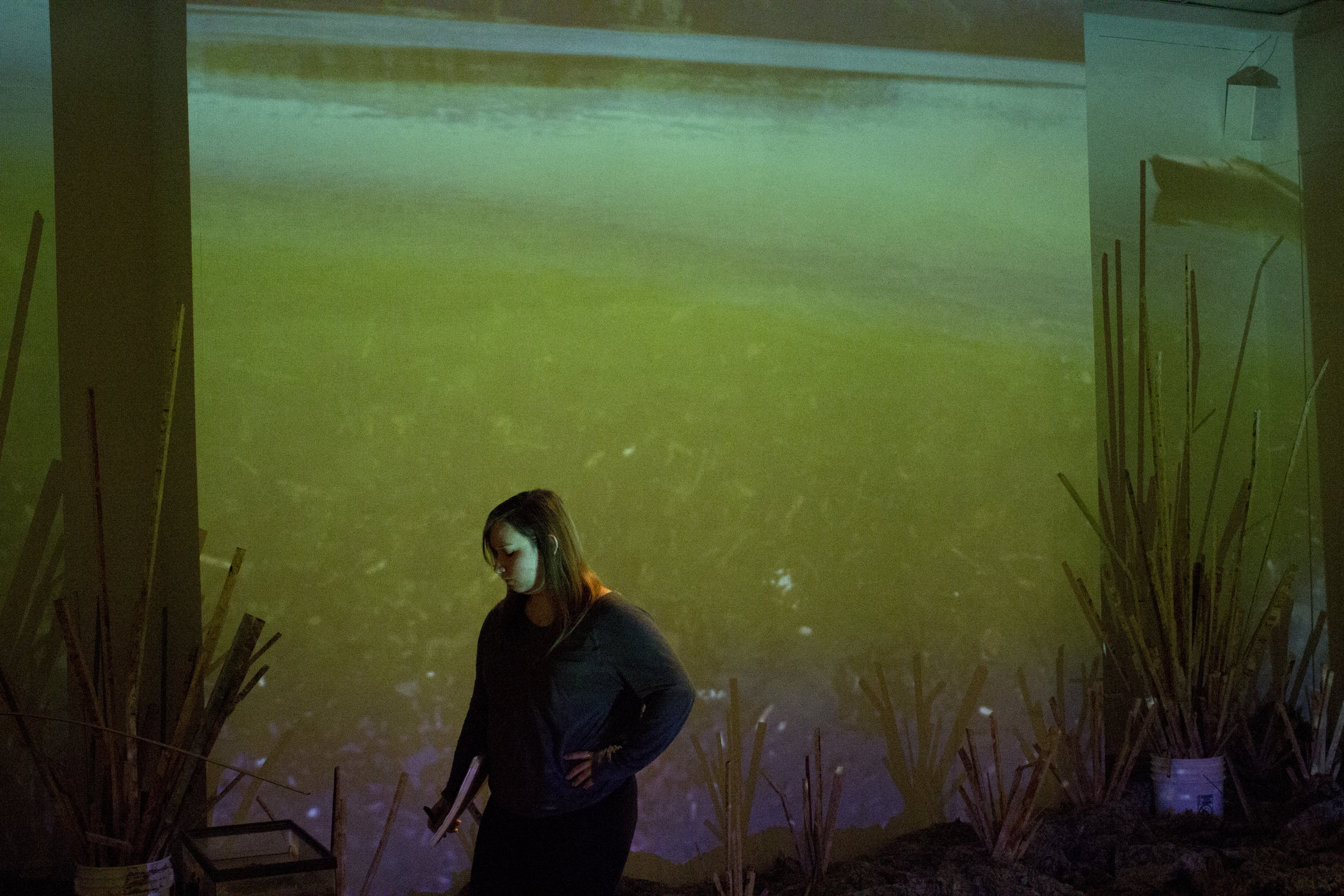
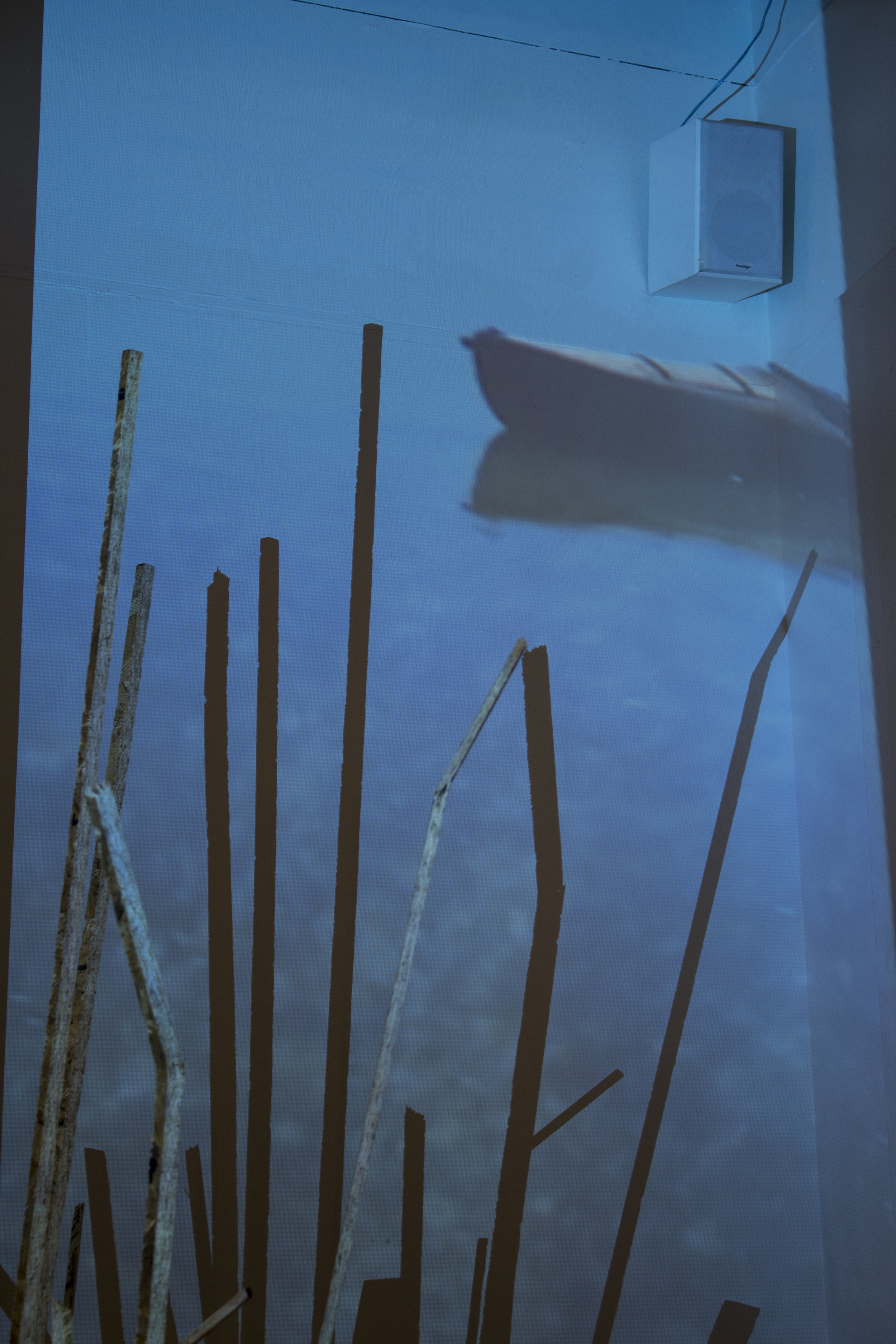
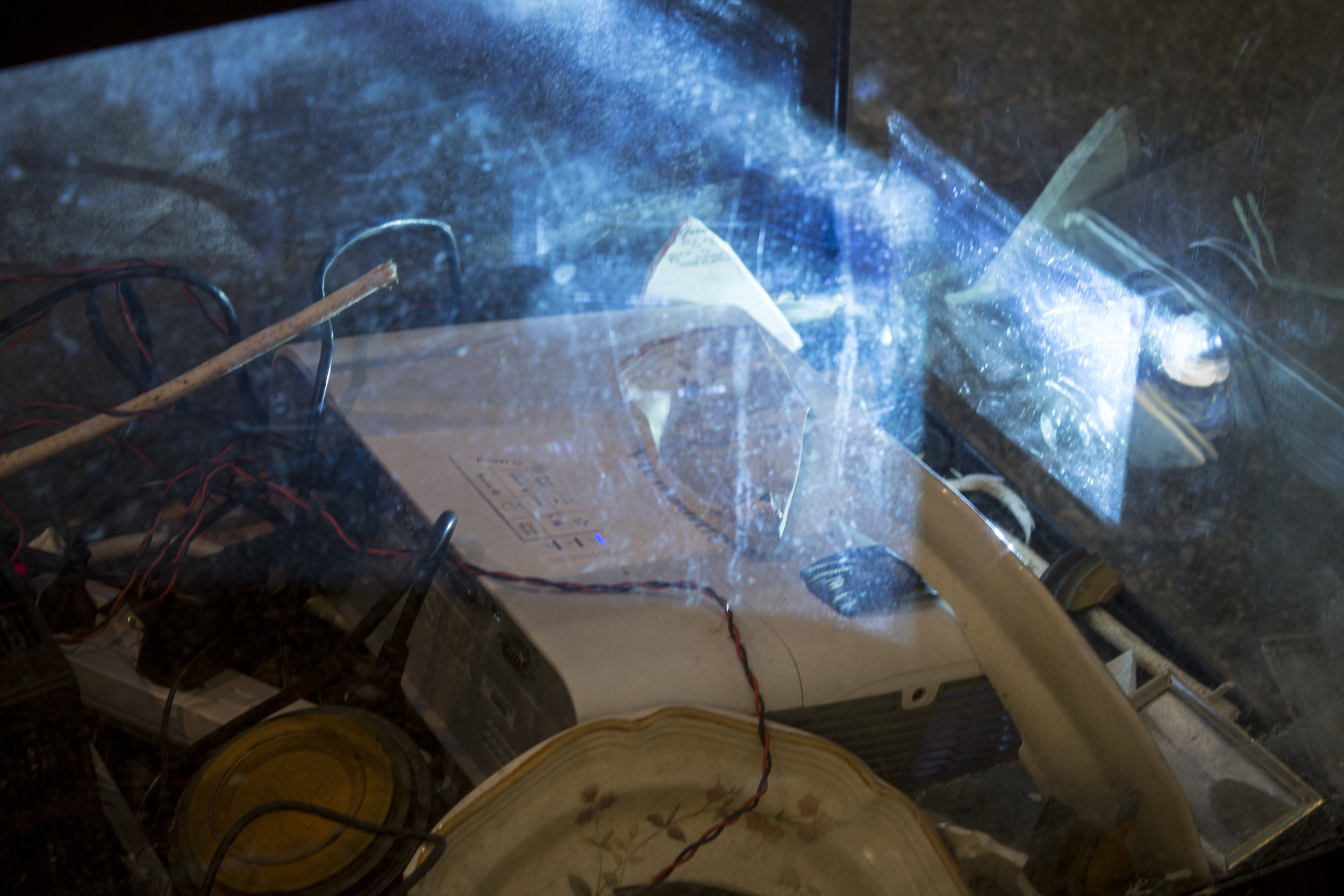
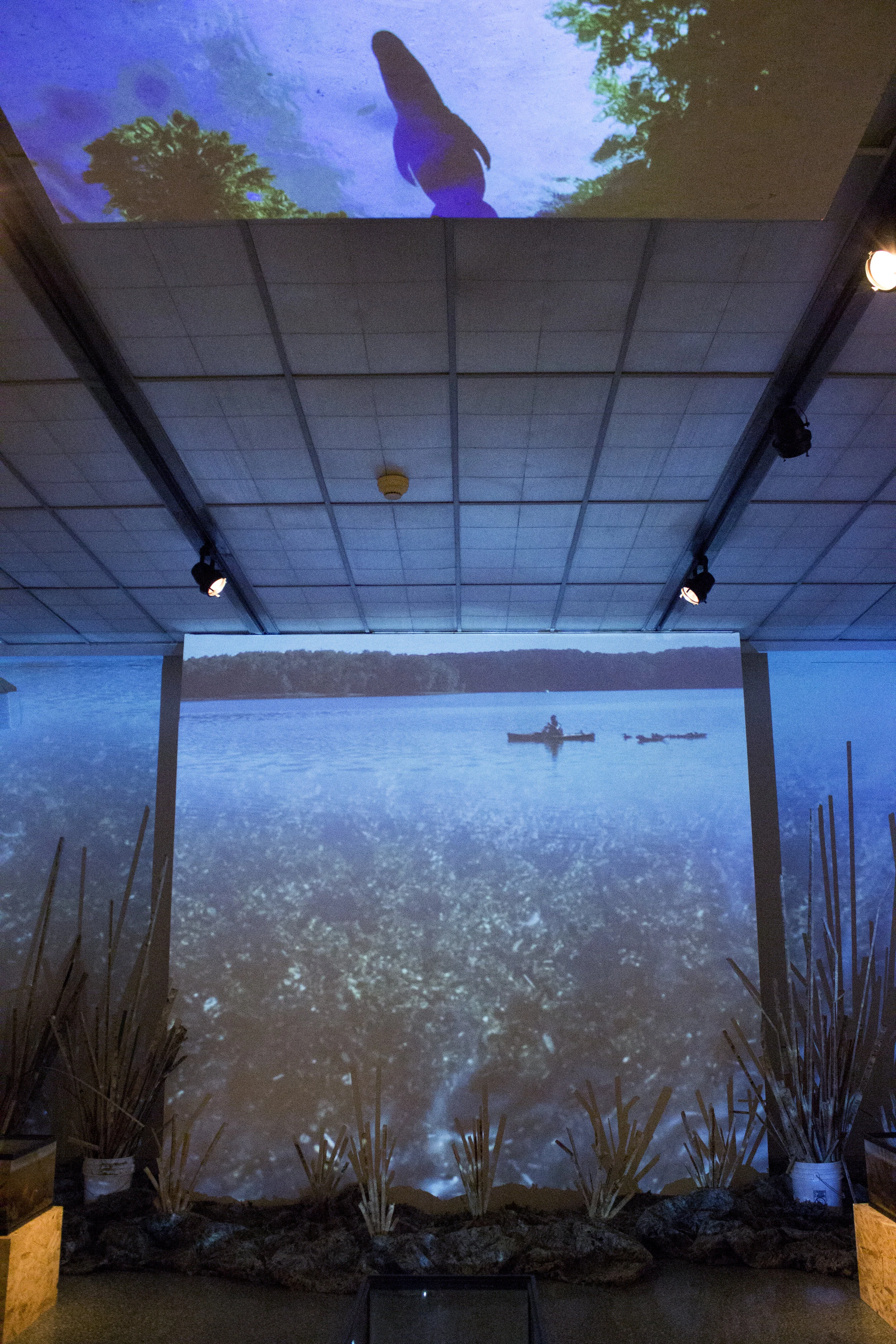
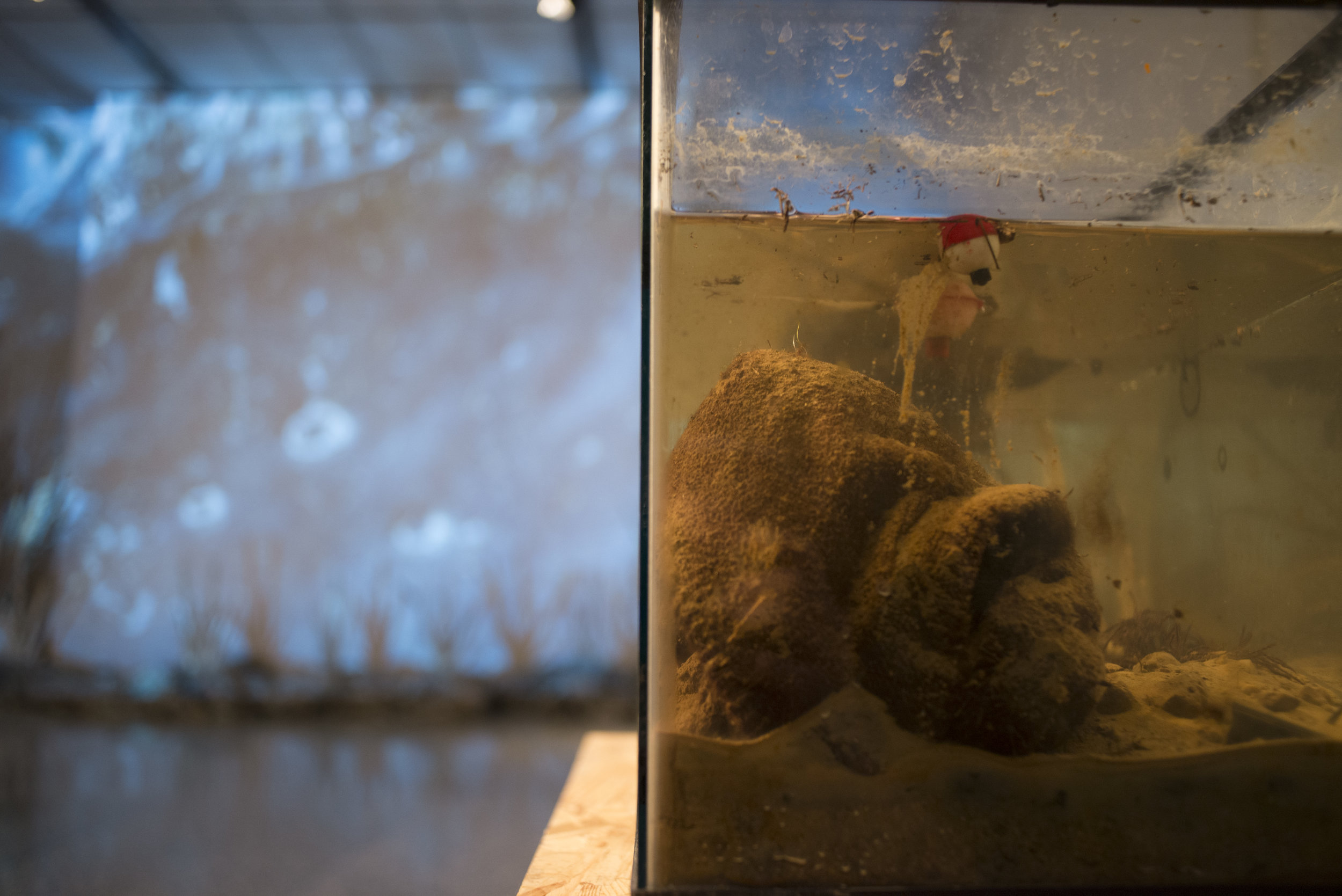
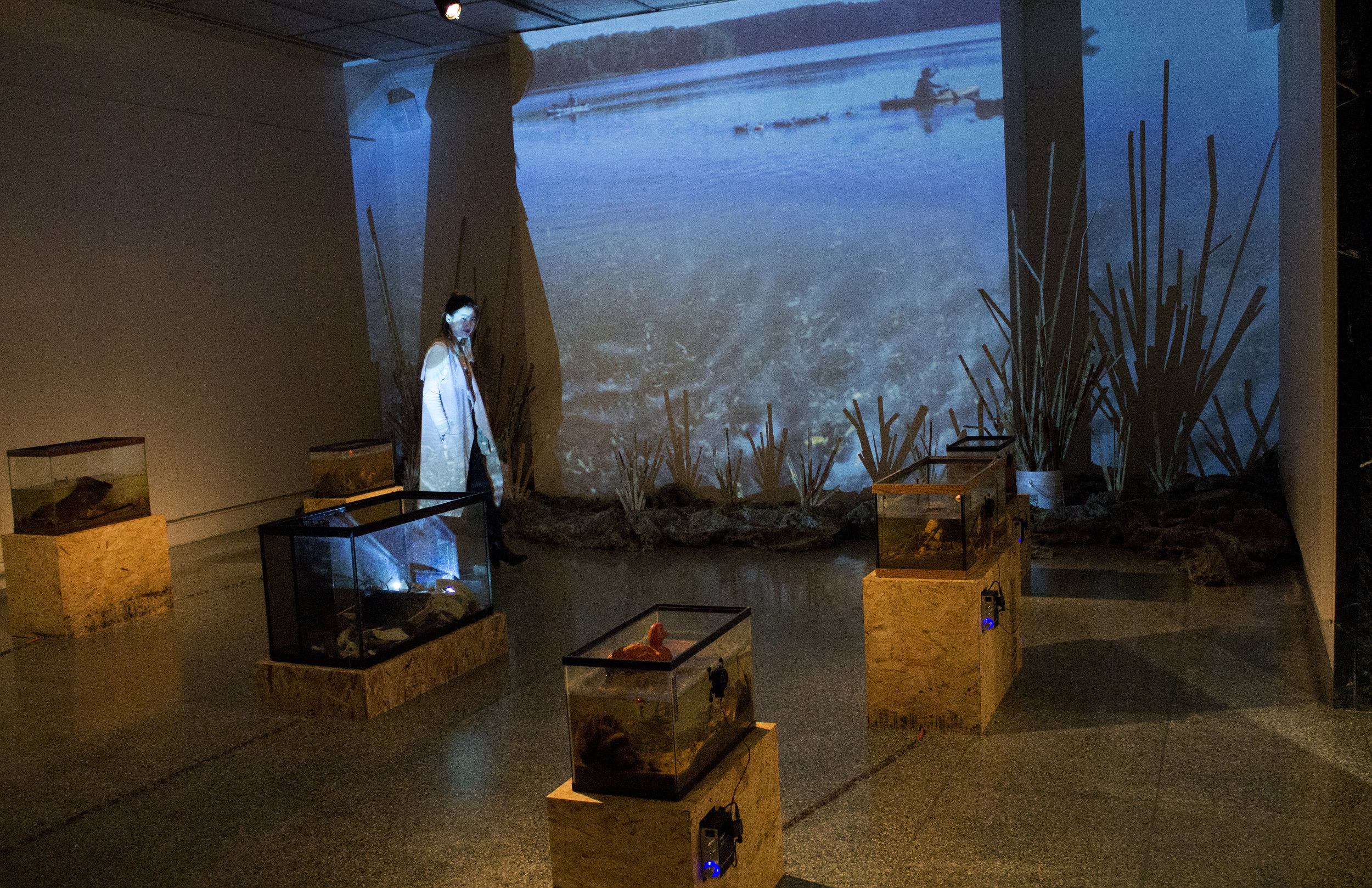
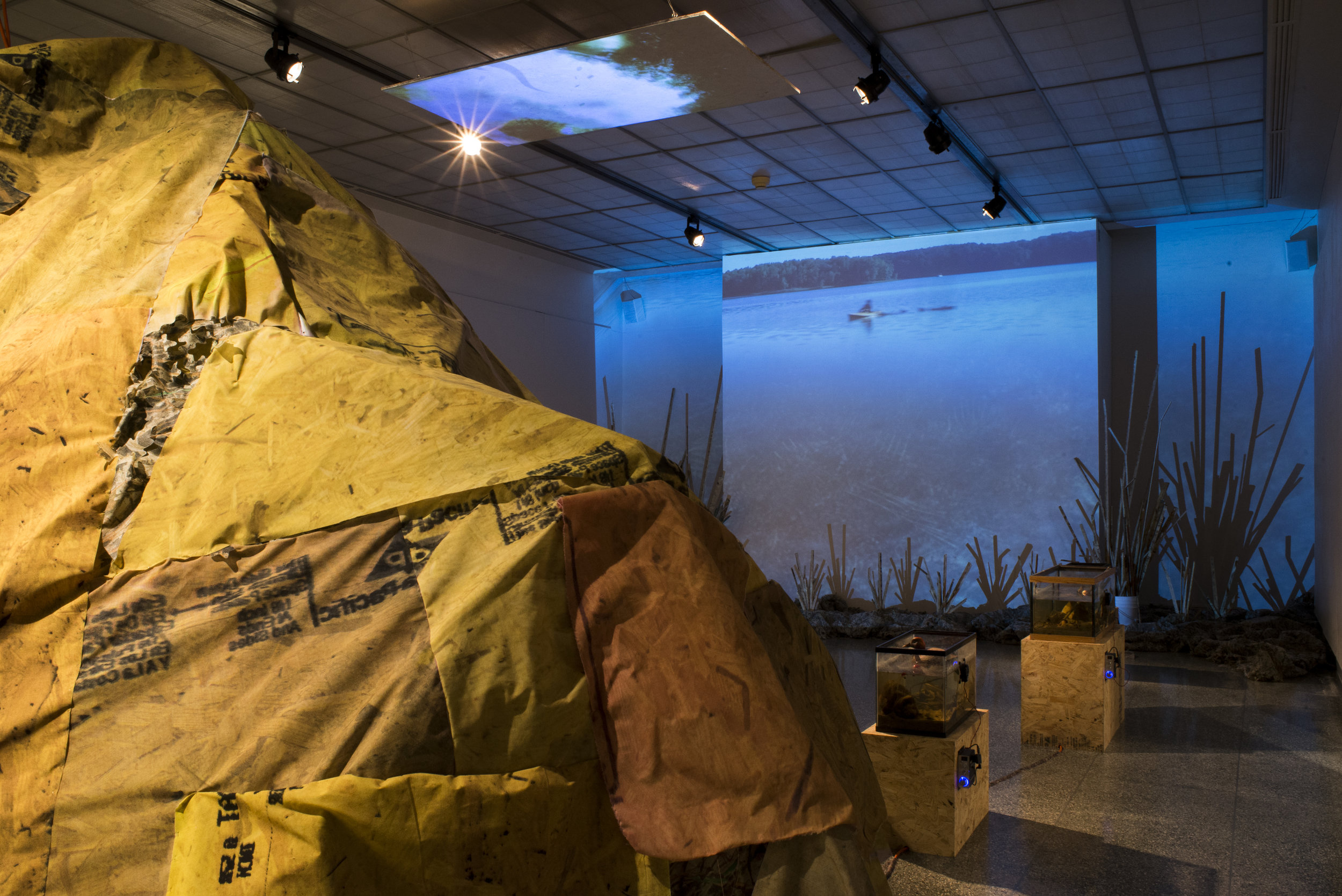
water collected from Monroe Reservoir, previously owned aquariums, camouflage netting, screen-printed broadcloth, O.S.B plywood, steel, wash cloth, lace, decoy ducks, clay pigeons, dinnerware, utensils, tractor seat, framed photographs, local flora and micro-fauna, fishing lures, bobbers, spools of thread, fishing line, rope, electrical chords and wiring, rod, meter stick, 2 channel video projections, projectors, media player, extension chords, amplifiers, MP3 players, 6-channel audio [ hymnal Troublesome Waters recorded by a digital choir (singing by William Staler, Christina Vines, William Charles Blanchard, Erin Tobey, Molly Fox, and Matthew Batty,) archival interviews of former residents of Elkinsville, Indiana, audio field recordings from Monroe Reservoir,] red healer.
27:17
2017
In the 1960’s the creation of the Monroe Reservoir had begun. It effectively caused generations of settlers in the Salt Creek Valley to be displaced from their homes and land. The the existing water systems were damed to replace other failing water infrastructures supporting Bloomington, and to provide flood control in lower Indiana and the Louisville area. The hundreds of farming families were moved from the estimated flood zone of the reservoir, and the towns that the people of these communities became “drowned towns” with the artificial rising of the water.
The Monroe Reservoir has since become a place of recreation and relaxation, better known as Lake Monroe. Large catfish, herons and double decker pontoon boats have created a new ecology that is a product of the muddiness of nature and culture. However, these relationships echo a more broad presumption created by capitalist myths of humyn dominion over all that is wild. Floating on the shoreline between culture and nature, I explore the murkiness of this artificial division. The current geological era of the anthropocene reveals that humynity has the power to effect the world around us, putting all species in peril. In order to shift perspectives from longing for a return to nature, my trans-disciplinary practices can establish a new place of natureculture that collapses the rupture of the dichotomy. Water Doesn’t Give A Damn provides a muddy narrative on what interconnectedness in contemporary America means all its complexity and compromise as alligators migrate north to the warming waterways.
water collected from Monroe Reservoir, previously owned aquariums, camouflage netting, screen-printed broadcloth, O.S.B plywood, steel, wash cloth, lace, decoy ducks, clay pigeons, dinnerware, utensils, tractor seat, framed photographs, local flora and micro-fauna, fishing lures, bobbers, spools of thread, fishing line, rope, electrical chords and wiring, rod, meter stick, 2 channel video projections, projectors, media player, extension chords, amplifiers, MP3 players, 6-channel audio [ hymnal Troublesome Waters recorded by a digital choir (singing by William Staler, Christina Vines, William Charles Blanchard, Erin Tobey, Molly Fox, and Matthew Batty,) archival interviews of former residents of Elkinsville, Indiana, audio field recordings from Monroe Reservoir,] red healer.
27:17
2017
In the 1960’s the creation of the Monroe Reservoir had begun. It effectively caused generations of settlers in the Salt Creek Valley to be displaced from their homes and land. The the existing water systems were damed to replace other failing water infrastructures supporting Bloomington, and to provide flood control in lower Indiana and the Louisville area. The hundreds of farming families were moved from the estimated flood zone of the reservoir, and the towns that the people of these communities became “drowned towns” with the artificial rising of the water.
The Monroe Reservoir has since become a place of recreation and relaxation, better known as Lake Monroe. Large catfish, herons and double decker pontoon boats have created a new ecology that is a product of the muddiness of nature and culture. However, these relationships echo a more broad presumption created by capitalist myths of humyn dominion over all that is wild. Floating on the shoreline between culture and nature, I explore the murkiness of this artificial division. The current geological era of the anthropocene reveals that humynity has the power to effect the world around us, putting all species in peril. In order to shift perspectives from longing for a return to nature, my trans-disciplinary practices can establish a new place of natureculture that collapses the rupture of the dichotomy. Water Doesn’t Give A Damn provides a muddy narrative on what interconnectedness in contemporary America means all its complexity and compromise as alligators migrate north to the warming waterways.